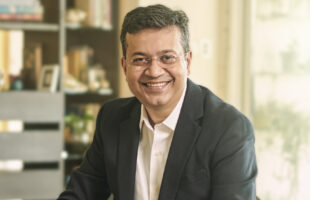South Korea – Eventful year
Free-To-Air (FTA)
South Korea has four main FTA broadcasters which comprises of Korean Broadcasting System (KBS), Munhwa Broadcasting Corporation (MBC), Seoul Broadcasting System (SBS) and Education Broadcasting System (EBS) − with EBS being the only education network. All three general networks broadcast 24/7 while EBS broadcasts for 21 – 22 hours a day – varying on the day.
SBS is the country’s only private broadcaster with both terrestrial and cable TV platforms.
Cable TV
This year marks the 20th anniversary of cable TV in South Korea. When it was launched back in 1995, audiences were thrilled at the arrival of 24 new channels – each focused on specific genre such as music, travel, food and even religion. Five years later, South Korea launched On Game Net, the world’s first game channel and soon after, a number of home shopping networks – changing the home-grown retail industry tremendously. In 2011, the first general-programming cable network, JTBC was launched and it led to the growth of cable TV further and thus as a result, luring audience away from FTA channels. South Korea went full digitisation on 31 December 2012. As of 2014, the penetration of cable TV in South Korea stands at 98%− the highest in Asia.
IPTV
KT Corporation, SK Broadband and LG Uplus are the only three IPTV service providers in South Korea. Back in 2012, just three years after IPTV was introduced in South Korea, the service providers forecasted 8 million subscribers by the end of 2014. The market surpassed 8 million subscribers in 2013 and was at 9 million as of March 2014. The number now stands at more than 10 million. The market produced revenue was $29 billion from the three service providers in 2012.
A research and markets report forecasted that the figure is likely to grow more than 56 billion by 2016, a compound annual rate growth of more than 18%. KT Corporation is the largest IPTV provider with 5.48 million subscribers followed by SK Broadband with 2.5 million and LG with 2.02 million.
Key Developments
In April 2014, BBC Worldwide announced deals with pay-TV operators Hyundai Media, YTN and FTA TV operator, KBS. The deals will carry natural history, factual and science genre programmes to a combined 40 million households in South Korea.
In July 2014, KBS and CCTV of China signed a MOU to co-produce a documentary regarding the Japanese invasion of Korea in the 16th century.
This documentary co-production agreement focused on an event of historical importance and is expected to strengthen cooperative ties.
In August 2014, KBS and the Korean Ministry of Science, ICT and Future Planning organised a co-production documentary project titled 2014 Korea−ASEAN One Vision. The project is a collaborative effort between the ten nations of the Association of Southeast Asian Nations (ASEAN) and KBS. It is to honour the 25th anniversary of dialogue cooperation between the Republic of Korea and ASEAN.
In October 2014, Screen Australia and the Korean Film Council (KOFIC) signed a MOU to enable co-productions of official films and television programmes to be made by the two countries.
In that same month, Turner Broadcasting System Asia-Pacific signed a volume deal with FTA broadcaster, MBC, locking in content for Oh!K, a new general entertainment channel.
In February 2015, KBS and internet-based search engine, Daum Kakao signed a MOU to produce a cross-platform drama, aiming at both online and off-line audiences.
In March 2015, Arirang TV announced that the channel will be airing in the UK by SKY, a British telecommunications company and Freesat, a FTA digital satellite television company. It will be the first Korean broadcaster included in the UK cable TV and broadcasts are scheduled to begin within four months, after related procedures are completed.
Hong Kong – steps up fight against piracy
CASBAA is urging the Hong Kong government to immediately begin considering further steps to restore balance and provide a new breath of life to the country’s creative industries, by passing amendments on its copyright law to give content creators and owners the right to authorise electronic dissemination of their content.
In November last year, CASBAA, the Asia-Pacific Association of the pay-TV industry, urged the Hong Kong legislature to end a decade of delay and pass amendments to Hong Kong’s copyright law to give content creators and owners the right – at least in theory – to authorise electronic dissemination of their content.
At the same time, the Association – with membership including “globally-renowned broadcasters and news organisations with a strong vested interest in protecting creative and political expression” – said that worries that the amendments could represent “some sort of threat to free and open political expression” are off target. The comments came in a submission to the legislative committee considering the Amendments.
“Hong Kong citizens may have reasons to be concerned about protecting their rights of free expression from challenges, but the Copyright Amendments are not such a challenge,” said CASBAA CEO Christopher Slaughter. “We are aware of no other copyright regime with exceptions and limitations that are more protective of freedom of political expression than the proposed Hong Kong approach, and we think that the Legislature needs to get on with the important business of passing this bill.”
Chief Policy Officer John Medeiros noted that CASBAA – along with other copyright industry groups – has been pressing for improvements in Hong Kong’s law for years. In the decade since the government began this process, he said, “The world of TV has been transformed. Old copyright laws never foresaw the degree to which broadband connections can be used to bring huge quantities of pirated digital content to every home in Hong Kong from places where copyright protection is weak.”
As a result, CASBAA told the legislature, “The television industry in particular is already suffering huge harm from online piracy unrestrained by existing inadequate laws.” Evidence is not hard to come by. The Association observed that the elevated levels and huge growth trend in online piracy are “plain to see for anyone with the will to have open eyes.”
Medeiros noted that – even while it supports rapid passage of the legislation – the TV industry remains critical of the large weaknesses of the Amendment Bill. “Establishment of a right to authorise communication of copyrighted works will not solve the piracy problem,” he said, and further steps are urgently needed. “Hong Kong is now way behind the curve,” Medeiros added. The Amendment Bill will implement for the first time copyright treaties signed almost 20 years ago, and “it is an absolutely necessary first step,” he said. In addition, CASBAA is urging the government to immediately begin considering further steps to restore balance and provide a new breath of life to Hong Kong’s creative industries.
Satellite
In September 2014, SatLink Communications launched its new Point of Presence (PoP) in Hong Kong. The new South East Asian based PoP, which accompanies SatLink’s multiple PoP’s in New York , London, Frankfurt and additional worldwide located PoP’s via partners, has been selected to provide both broadcasters and TV operators located in Asia and those looking to expand their reach into the Asian region.
Located at the Equinox Data Centre, one of the busiest centre’s for trade in Hong Kong, the PoP provides both international and local connectivity for broadcasters and operators allowing for quick and low latency connectivity to and out of the APAC region.
The PoP will be integrated into SatLink’s global satellite and fibre network to enable customers to extend their audience reach into new markets and gain access to SatLink’s full range of end-to-end broadcast services including HD playout, content management and OTT solutions.
Satlink currently operates two MCPC (Multi Channel Per Carrier) platforms on the AsiaSat 5 C-band satellite, delivering content for tier one international and news broadcasters to Asian Pay TV markets in DVB-S2 and Free to air markets in DVB-S.
Audience Measurement
now TV, CSM Media Research (CSM) and Kantar Media introduced Hong Kong’s first integrated cross-platform audience measurement using Return-Path-Data (RPD) technology for tracking viewership of content on now TV’s television, online and OTT platforms. The Return-Path Rating Service (RPR) will be the first cross-platform viewership measurement by using RPD in Hong Kong based on automated system-captured data.
To deliver accuracy and to enable more detailed customer segmentation, a large panel of 2,000 samples representative of now TV’s customer demographics is used for the projection of the lifestyle and consumption pattern of now TV’s 1.2 million-strong subscriber base. The demographics of the individual members of the recruited households were recorded at the panel-recruitment stage.
Powered by Kantar Media’s RPD technology, CSM will analyse system-captured data with Kantar Media’s proprietarily developed Probability of Individual Viewing (PIV) algorithm. The PIV algorithm is a statistic projection model for projecting eyeballs with RPD, basing on an array of variables of proven statistically significant correlation. Kantar Media has applied the PIV algorithm in the tracking of viewership in many other RPD services.
Variables and attributes commonly used by advertisers, media agencies and advertising agencies in monitoring viewership will be adopted in the reporting of the RPR, including Gross Rating Points (GRP), Target Audience Rating Points (TARPs) and Cost Per Rating Point (CPRP), Reach and Frequency.
South Korea – Eventful year
Free-To-Air (FTA)
South Korea has four main FTA broadcasters which comprises of Korean Broadcasting System (KBS), Munhwa Broadcasting Corporation (MBC), Seoul Broadcasting System (SBS) and Education Broadcasting System (EBS) − with EBS being the only education network. All three general networks broadcast 24/7 while EBS broadcasts for 21 – 22 hours a day – varying on the day.
SBS is the country’s only private broadcaster with both terrestrial and cable TV platforms.
Cable TV
This year marks the 20th anniversary of cable TV in South Korea. When it was launched back in 1995, audiences were thrilled at the arrival of 24 new channels – each focused on specific genre such as music, travel, food and even religion. Five years later, South Korea launched On Game Net, the world’s first game channel and soon after, a number of home shopping networks – changing the home-grown retail industry tremendously. In 2011, the first general-programming cable network, JTBC was launched and it led to the growth of cable TV further and thus as a result, luring audience away from FTA channels. South Korea went full digitisation on 31 December 2012. As of 2014, the penetration of cable TV in South Korea stands at 98%− the highest in Asia.
IPTV
KT Corporation, SK Broadband and LG Uplus are the only three IPTV service providers in South Korea. Back in 2012, just three years after IPTV was introduced in South Korea, the service providers forecasted 8 million subscribers by the end of 2014. The market surpassed 8 million subscribers in 2013 and was at 9 million as of March 2014. The number now stands at more than 10 million. The market produced revenue was $29 billion from the three service providers in 2012.
A research and markets report forecasted that the figure is likely to grow more than 56 billion by 2016, a compound annual rate growth of more than 18%. KT Corporation is the largest IPTV provider with 5.48 million subscribers followed by SK Broadband with 2.5 million and LG with 2.02 million.
Key Developments
In April 2014, BBC Worldwide announced deals with pay-TV operators Hyundai Media, YTN and FTA TV operator, KBS. The deals will carry natural history, factual and science genre programmes to a combined 40 million households in South Korea.
In July 2014, KBS and CCTV of China signed a MOU to co-produce a documentary regarding the Japanese invasion of Korea in the 16th century.
This documentary co-production agreement focused on an event of historical importance and is expected to strengthen cooperative ties.
In August 2014, KBS and the Korean Ministry of Science, ICT and Future Planning organised a co-production documentary project titled 2014 Korea−ASEAN One Vision. The project is a collaborative effort between the ten nations of the Association of Southeast Asian Nations (ASEAN) and KBS. It is to honour the 25th anniversary of dialogue cooperation between the Republic of Korea and ASEAN.
In October 2014, Screen Australia and the Korean Film Council (KOFIC) signed a MOU to enable co-productions of official films and television programmes to be made by the two countries.
In that same month, Turner Broadcasting System Asia-Pacific signed a volume deal with FTA broadcaster, MBC, locking in content for Oh!K, a new general entertainment channel.
In February 2015, KBS and internet-based search engine, Daum Kakao signed a MOU to produce a cross-platform drama, aiming at both online and off-line audiences.
In March 2015, Arirang TV announced that the channel will be airing in the UK by SKY, a British telecommunications company and Freesat, a FTA digital satellite television company. It will be the first Korean broadcaster included in the UK cable TV and broadcasts are scheduled to begin within four months, after related procedures are completed.
Hong Kong – steps up fight against piracy
CASBAA is urging the Hong Kong government to immediately begin considering further steps to restore balance and provide a new breath of life to the country’s creative industries, by passing amendments on its copyright law to give content creators and owners the right to authorise electronic dissemination of their content.
In November last year, CASBAA, the Asia-Pacific Association of the pay-TV industry, urged the Hong Kong legislature to end a decade of delay and pass amendments to Hong Kong’s copyright law to give content creators and owners the right – at least in theory – to authorise electronic dissemination of their content.
At the same time, the Association – with membership including “globally-renowned broadcasters and news organisations with a strong vested interest in protecting creative and political expression” – said that worries that the amendments could represent “some sort of threat to free and open political expression” are off target. The comments came in a submission to the legislative committee considering the Amendments.
“Hong Kong citizens may have reasons to be concerned about protecting their rights of free expression from challenges, but the Copyright Amendments are not such a challenge,” said CASBAA CEO Christopher Slaughter. “We are aware of no other copyright regime with exceptions and limitations that are more protective of freedom of political expression than the proposed Hong Kong approach, and we think that the Legislature needs to get on with the important business of passing this bill.”
Chief Policy Officer John Medeiros noted that CASBAA – along with other copyright industry groups – has been pressing for improvements in Hong Kong’s law for years. In the decade since the government began this process, he said, “The world of TV has been transformed. Old copyright laws never foresaw the degree to which broadband connections can be used to bring huge quantities of pirated digital content to every home in Hong Kong from places where copyright protection is weak.”
As a result, CASBAA told the legislature, “The television industry in particular is already suffering huge harm from online piracy unrestrained by existing inadequate laws.” Evidence is not hard to come by. The Association observed that the elevated levels and huge growth trend in online piracy are “plain to see for anyone with the will to have open eyes.”
Medeiros noted that – even while it supports rapid passage of the legislation – the TV industry remains critical of the large weaknesses of the Amendment Bill. “Establishment of a right to authorise communication of copyrighted works will not solve the piracy problem,” he said, and further steps are urgently needed. “Hong Kong is now way behind the curve,” Medeiros added. The Amendment Bill will implement for the first time copyright treaties signed almost 20 years ago, and “it is an absolutely necessary first step,” he said. In addition, CASBAA is urging the government to immediately begin considering further steps to restore balance and provide a new breath of life to Hong Kong’s creative industries.
Satellite
In September 2014, SatLink Communications launched its new Point of Presence (PoP) in Hong Kong. The new South East Asian based PoP, which accompanies SatLink’s multiple PoP’s in New York , London, Frankfurt and additional worldwide located PoP’s via partners, has been selected to provide both broadcasters and TV operators located in Asia and those looking to expand their reach into the Asian region.
Located at the Equinox Data Centre, one of the busiest centre’s for trade in Hong Kong, the PoP provides both international and local connectivity for broadcasters and operators allowing for quick and low latency connectivity to and out of the APAC region.
The PoP will be integrated into SatLink’s global satellite and fibre network to enable customers to extend their audience reach into new markets and gain access to SatLink’s full range of end-to-end broadcast services including HD playout, content management and OTT solutions.
Satlink currently operates two MCPC (Multi Channel Per Carrier) platforms on the AsiaSat 5 C-band satellite, delivering content for tier one international and news broadcasters to Asian Pay TV markets in DVB-S2 and Free to air markets in DVB-S.
Audience Measurement
now TV, CSM Media Research (CSM) and Kantar Media introduced Hong Kong’s first integrated cross-platform audience measurement using Return-Path-Data (RPD) technology for tracking viewership of content on now TV’s television, online and OTT platforms. The Return-Path Rating Service (RPR) will be the first cross-platform viewership measurement by using RPD in Hong Kong based on automated system-captured data.
To deliver accuracy and to enable more detailed customer segmentation, a large panel of 2,000 samples representative of now TV’s customer demographics is used for the projection of the lifestyle and consumption pattern of now TV’s 1.2 million-strong subscriber base. The demographics of the individual members of the recruited households were recorded at the panel-recruitment stage.
Powered by Kantar Media’s RPD technology, CSM will analyse system-captured data with Kantar Media’s proprietarily developed Probability of Individual Viewing (PIV) algorithm. The PIV algorithm is a statistic projection model for projecting eyeballs with RPD, basing on an array of variables of proven statistically significant correlation. Kantar Media has applied the PIV algorithm in the tracking of viewership in many other RPD services.
Variables and attributes commonly used by advertisers, media agencies and advertising agencies in monitoring viewership will be adopted in the reporting of the RPR, including Gross Rating Points (GRP), Target Audience Rating Points (TARPs) and Cost Per Rating Point (CPRP), Reach and Frequency.







